10 important staircase safety tips that everyone should know
Stairs can be a danger whatever your age. Take our advice and make them safer for you and your family


How safe are your stairs? It’s probably not the first thing you thought about when you were viewing your home-to-be, or even since moving in, but our staircase safety tips are worth serious consideration. Because according to the Royal Society for the Prevention of Accidents, RoSPA, falls on stairs claim the lives of 700 people in the UK every year.
And as if that wasn’t shocking enough, more than 37,000 people end up in hospital every year following a fall on the stairs at home. Given the long-term impact a fall can have, it’s prudent to consider configuring your hallway to lower that risk.
Happily, there are plenty of things you can do to make a staircase safer in an existing property. Meanwhile, RoSPA’s Safer Stairs campaign is lobbying Government for a change in Building Regulations that will make stairs in new-build homes safer. Read on to find out what you can do to protect yourself and your family.

Ashley Martin is Public Health Adviser for the Royal Society for the Prevention of Accidents (RoSPA) and is an expert on all aspects of safety around the home, including staircase safety and fall prevention. He leads on accident prevention campaigns including Safer Stairs and Stay Up, Stand Up, and has appeared widely on national television and in the press, offering safety advice to the public.
What is the Safer Stairs campaign?
‘Through our Safer Stairs campaign, RoSPA is calling for an Existing British Standard (BS 5395-1) to be made mandatory in Building Regulations for new-build properties and where anybody makes alterations in their home,’ explains RoSPA’s Ashley Martin. ‘This would improve the safety of stairs by insuring they are built to certain specifications. This takes into account the dimensions of the stairs, the rise, depth and consistency of the treads, slip resistance and also the provision of handrails.’
This will mean that rather than simply recommending standards of safety, the Government will require house builders to build all stairs to this standard by law. Similarly, where work is undertaken to alter an existing staircase as part of a renovation, Building Regulations would require that staircase to meet BS 5395-1.
‘While it’s not possible to go in retrospectively and make these changes in every home, quite often, where there are changes to building regulations, it applies to new homes and any homes where there are substantial renovations. It might depend on the circumstances, but there is a likelihood it will apply to homes being renovated,’ adds Ashley.
The result of improving these safety standards for stair design will significantly reduce the number of people needlessly dying and getting hurt. ‘It’s been estimated that by building all stairs to that standard it would reduce falls by around 60%,’ says Ashley Martin. ‘RoSPA is of course concerned about falls on stairs as they claim around 700 lives every year, and around 37,000 hospital admissions. This is a significant number, particularly when you consider the consequences of the fall. People, quite often, when they’ve had a fall, never recover their full mobility and strength.’
The Government has committed to a consultation on the subject within a year, and RoSPA is very hopeful that the lobbying will be successful. ‘This simple change could help reduce falls on stairs quite dramatically.’
What can I do to make my existing stairs safe?
‘We know our campaign is only part of the answer,’ says Ashley. ‘There will be many homes that have existing stairs that are not up to code. Then it’s just about trying to make them as safe as possible to prevent falls, and there are a number of things that can be done.’
1. Renovate your stairs completely
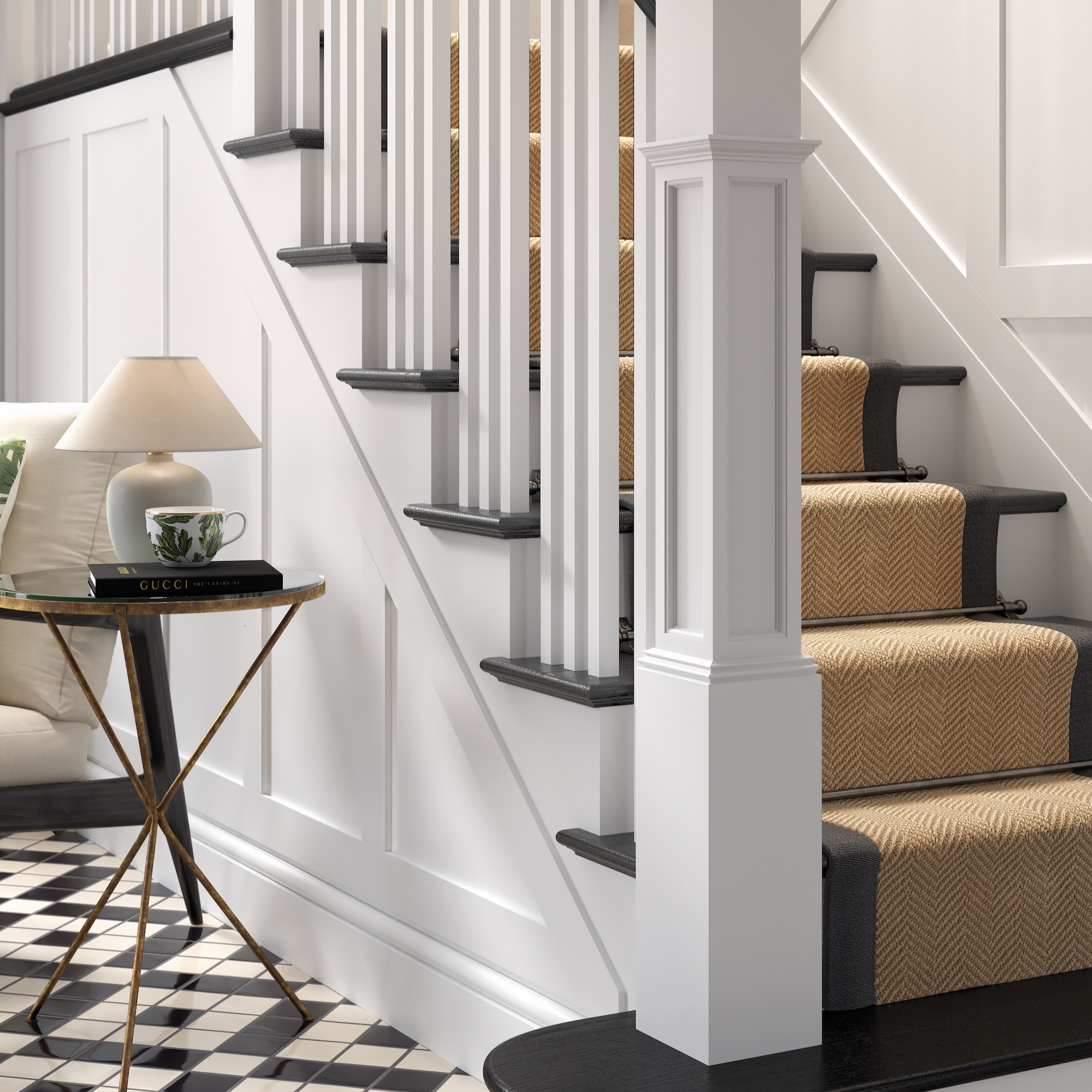
While costly, this is a surefire way to make your staircase safer – for example, by changing the pitch of your staircase to make the steps less steep. If you are particularly concerned about staircase safety tips – and we think you should be – it’s wise to get a staircase specialist to do the job. They are likely to be more aware of the safety standards regarding staircases, covered by Building Regulations Section K.
Peter Wright is Sales Manager at Neville Johnson: ‘When renovating a staircase, we always observe these standards and recommend additional safeguards where appropriate. There are many older staircases that don’t meet the current regulations so we look to improve the safety in any work we do.'
'This covers such key areas as the spacing between spindles, handrail heights, installing guarding adjacent to drops and avoiding horizontal features that can encourage children to climb.’
‘All our materials are tested for strength and suitability by external and independent testing experts… and our fitting processes, which have been through extensive R&D, are tried and tested. Many carpentry companies will say they can do staircases, we say we specialise in staircases.’
2. Keep your stairs completely free of clutter

This is something I’m sure most of us are guilty of, particularly when we are trying to save time on chores. ‘Get out of the habit of leaving things on the stairs to take up later,’ says Ashley Martin. ‘And make sure there are no tripping hazards on your stairs.’
So next time you go to leave a small pile of clean socks or the kids toys on the third step to ‘take up later’, either get the full climb over with, or leave them somewhere safer nearby.
3. Light your stairs properly

‘One extremely important safety point is nothing to do with the stairs themselves, but rather, the lighting,’ says Ashley Martin. ‘Quite often, stairwells are dimly lit. We see the issue becoming more significant as people look to cut their energy usage, by reducing lighting in this area to save money. But it’s important to have very well-lit stairs as it does help to reduce falls.’
As stairs are high-traffic areas, it’s best to use lighting that won’t be too obtrusive. Low-level LED strips or side-mounted spotlights near floor level will highlight the treads well. It’s important that any wall lights are as flush as possible, so that they don’t catch against clothing.
If you have small children, avoid lights that hang down through a spiral stairwell from long cords, as they may be tempted to reach out for them and fall. Plus you could knock your head against them.
4. Brighten your stairs with paint and mirrors
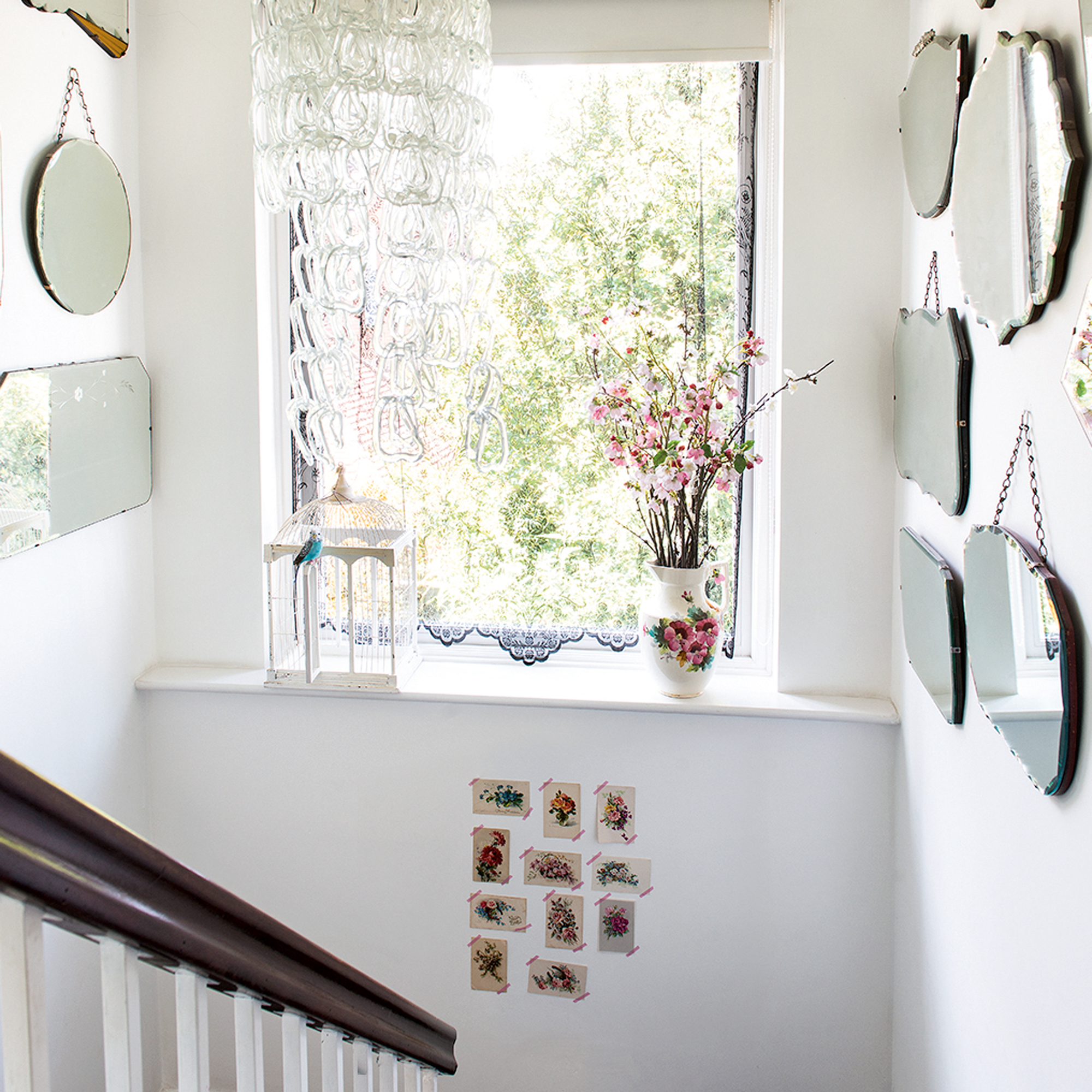
Your well-chosen hallway lighting scheme could be undone by drenching the walls in a dark colour. So while stylish, this look should be considered carefully. ‘Tones of white will obviously be a suitable colour for a bright hallway and can look super stylish – especially if you think about painting woodwork something like a pale grey to give definition,’ says Crown colour expert Justyna Korczynska.
Other ways to bring light into a stairwell to help with staircase safety tips include the use of mirrors, painting woodwork – including balustrades and handrails – white or off-white, or using light-reflecting metallic paint over matt emulsion.
5. Have a handrail… or better yet, two
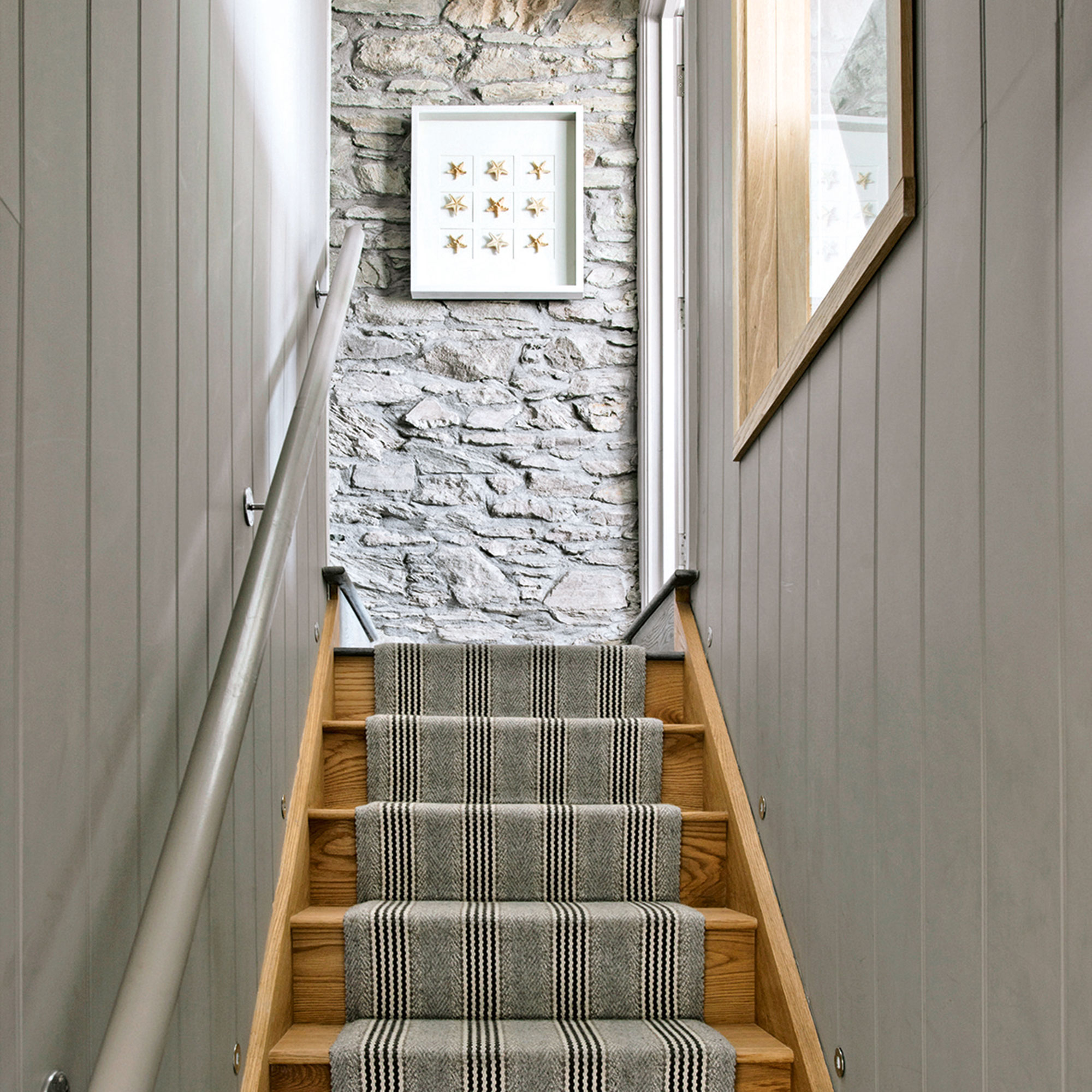
‘Ideally you want handrails both sides of your staircase,’ says Ashley. ‘In some properties, that might be difficult, but do have them where possible. That will significantly reduce the risk of falling and give you something to grab onto if you do start to stumble.’
So if you ripped out your rail in favour of a fancy wall panelling idea, you really should consider reinstating it to align with staircase safety tips.
‘If the stairs are being used by young or elderly then one of the simplest ways to improve safety on the stairs is to have a handrail both sides,’ agrees Peter Wright. ‘This is a particular benefit for people with knee or hip issues as it gives them a better balance being able to hold on both side. It also makes it easier to comfortably control their rate of descent.’
‘Our range of wall handrails span the traditional to the modern and are a far cry from the round “mop handle” that springs to mind for many people. If you don’t want to lose width to the staircase we have some very attractive low profile options that will add safety whilst also looking great.’
6. Consider your flooring carefully
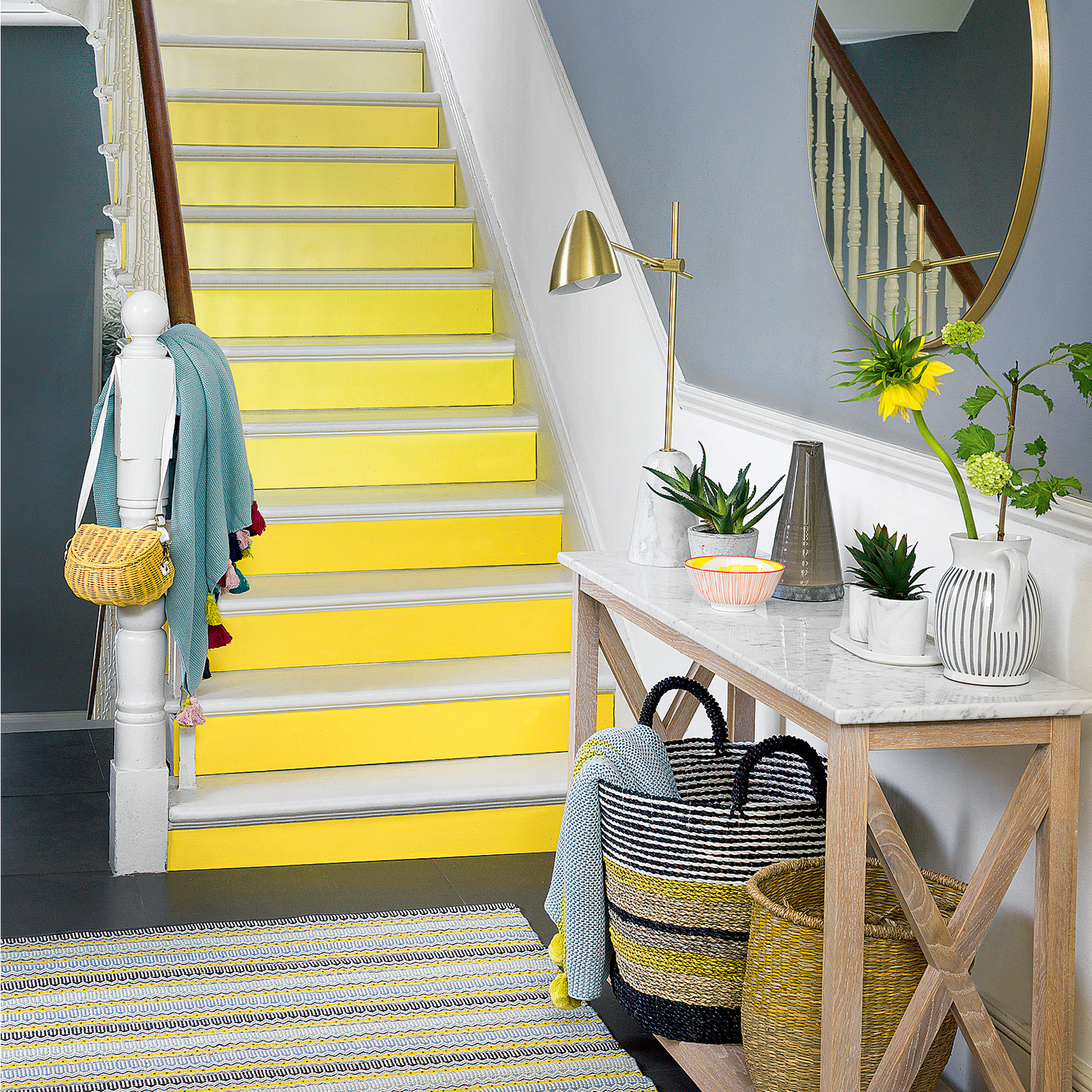
‘Always make sure the floorcoverings on the stairs are in very good condition,’ advises Ashley. Look out for any rips or tears in carpet and repair them immediately, and ensure your surfaces are non slip. It’s not an area where you want to see a highly polished finish.’
If you are painting your staircase, use specialist floorboard paint or non-slip paint designed for use on wood.
Buy now: GoodHome Durable Sedona Matt Floor & stair paint, £22 for 750ml, B&Q
Stair carpets are suitable and safe, provided you choose the right type. In fact, Ashley Martin suggests that ‘it might offer more security’ over a wooden or painted stairway, ‘provided it’s in good condition’.
Most carpet companies will recommend a wool or wool-mix carpet – such as wool/nylon – for stairs as they repel dirt and are less likely to flatten over time. Extra-thick carpets that are full of air offer less security underfoot, particularly when heading downstairs, and are to be avoided.
7. Don't dismiss a runner
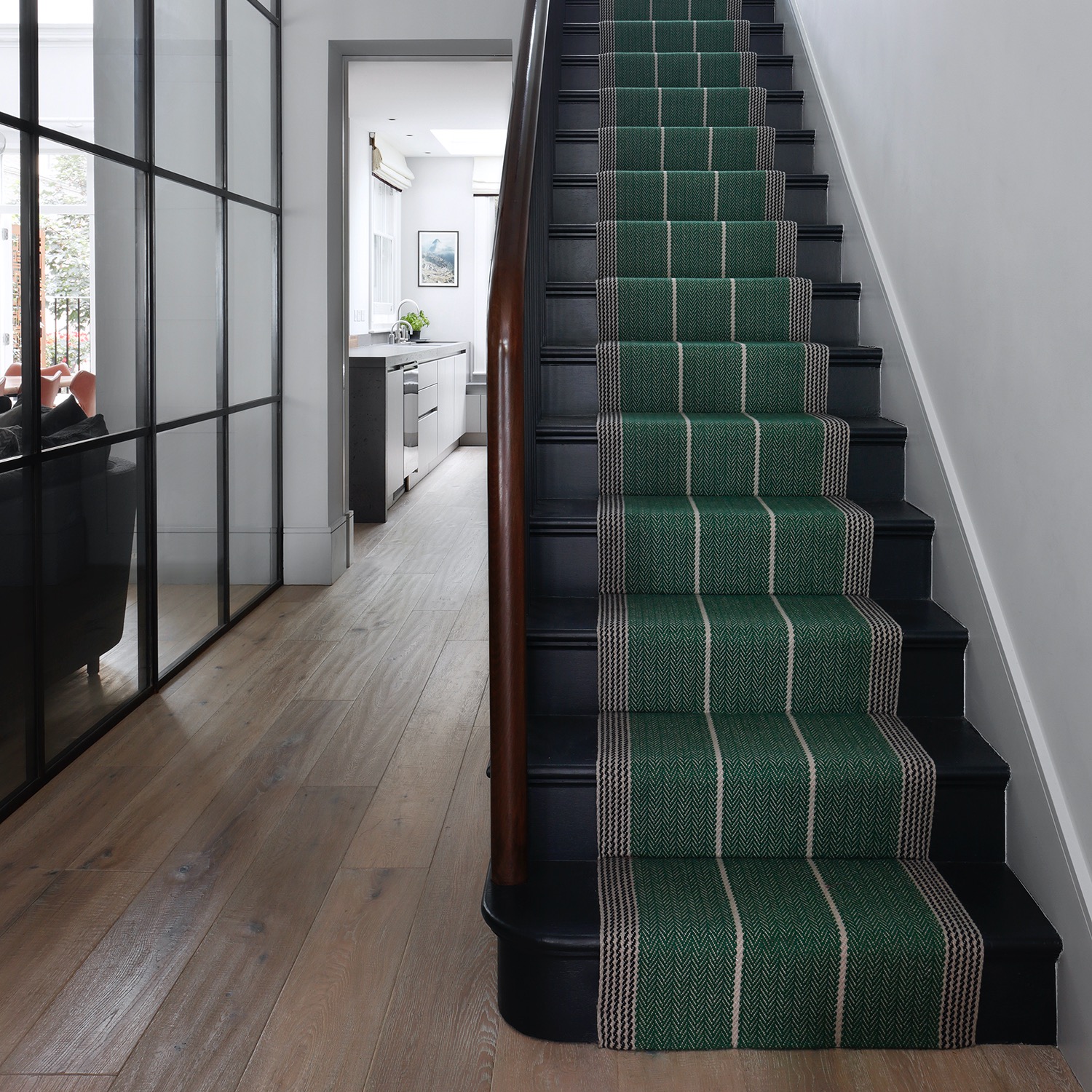
If you don't like the look of a fully carpeted staircase but are worried that wood could prove too slippery, consider a stair runner idea. Runners provide the best of both worlds, the narrow-width floorcoverings run down the centre of the staircase exposing the wood at the sides of the staircase.
'Our 100% wool flatweave material has a woven construction that provides traction underfoot ensuring a safer environment,' says Jane Armstrong, Managing Director, Roger Oates Design. 'It is important that it is installed by someone experienced in fitting an unbacked flatweave A good fitter will guarantee a high-quality installation which will ensure that the runner will perform better over its lifetime and will not become loose.'
But what about those rods that hold a runner down? Could they be a trip hazard? 'Stair runners are now secured by a specialised type of gripper so rods are no longer functional in holding the stair runner in place,' Jane explains. 'In the right setting, they will add a decorative finish. However, if your treads are shallow it is best to avoid stair rods as they will reduce the amount of tread you have to step on.'
8. Fit stair gates, but only where appropriate
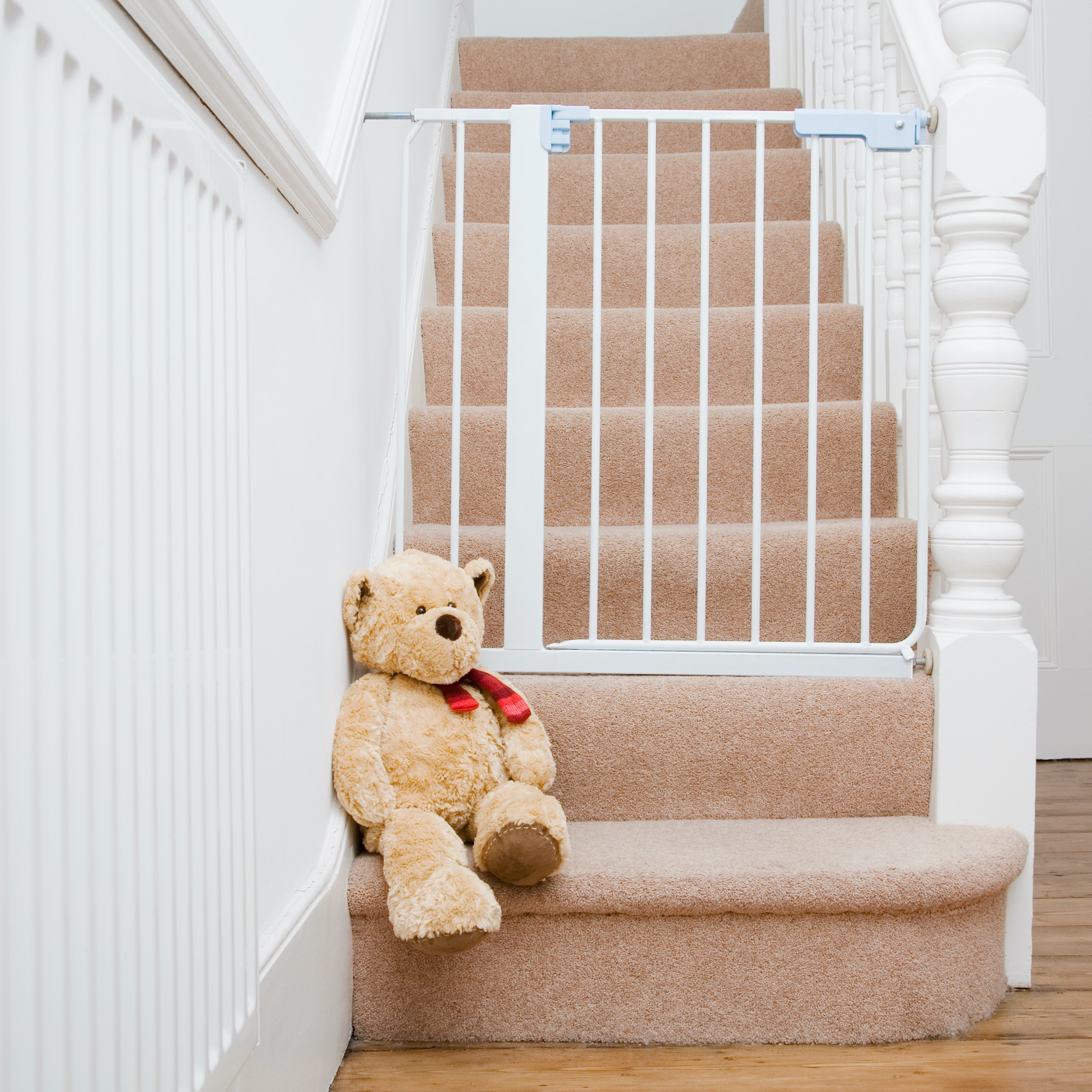
‘Safety gates are useful for children up to the age of 24 months,’ says Ashley Martin. ‘We don’t recommend them for children older than that, because the safety standard on such gates is only applicable to children up to 24 months. It’s related to the child’s weight and ability to either climb or open the gate once they reach 24 months. It’s important that as children move from the crawling to the toddling stage that they are then well versed in how to use the stairs safely, through guidance and supervision.’
‘The gates should be fitted securely according to the manufacturer’s instructions. You can buy pressure-mounted gates but we don’t tend to recommend those, particularly not for the top of the stairs, as it’s very difficult to ensure that pressure is adjusted correctly and safely. So while you may be reluctant to drill into walls, it is by far the safest way to attach a gate.’
‘We also recommend fitting gates at the top and the bottom of the stairs. People sometimes forget that if you put them at the top but then don’t have a stair gate at the bottom, a child could still climb up and fall backwards.’
Finally, Ashley has a warning for dog owners using gates to keep their hounds from travelling up or downstairs: ‘We are aware that some people use safety gates to try and restrict larger dogs by putting one gate on top of another. That’s a very, very dangerous practice as children have ended up getting caught between the gates.’
9. Avoid open-tread stairs
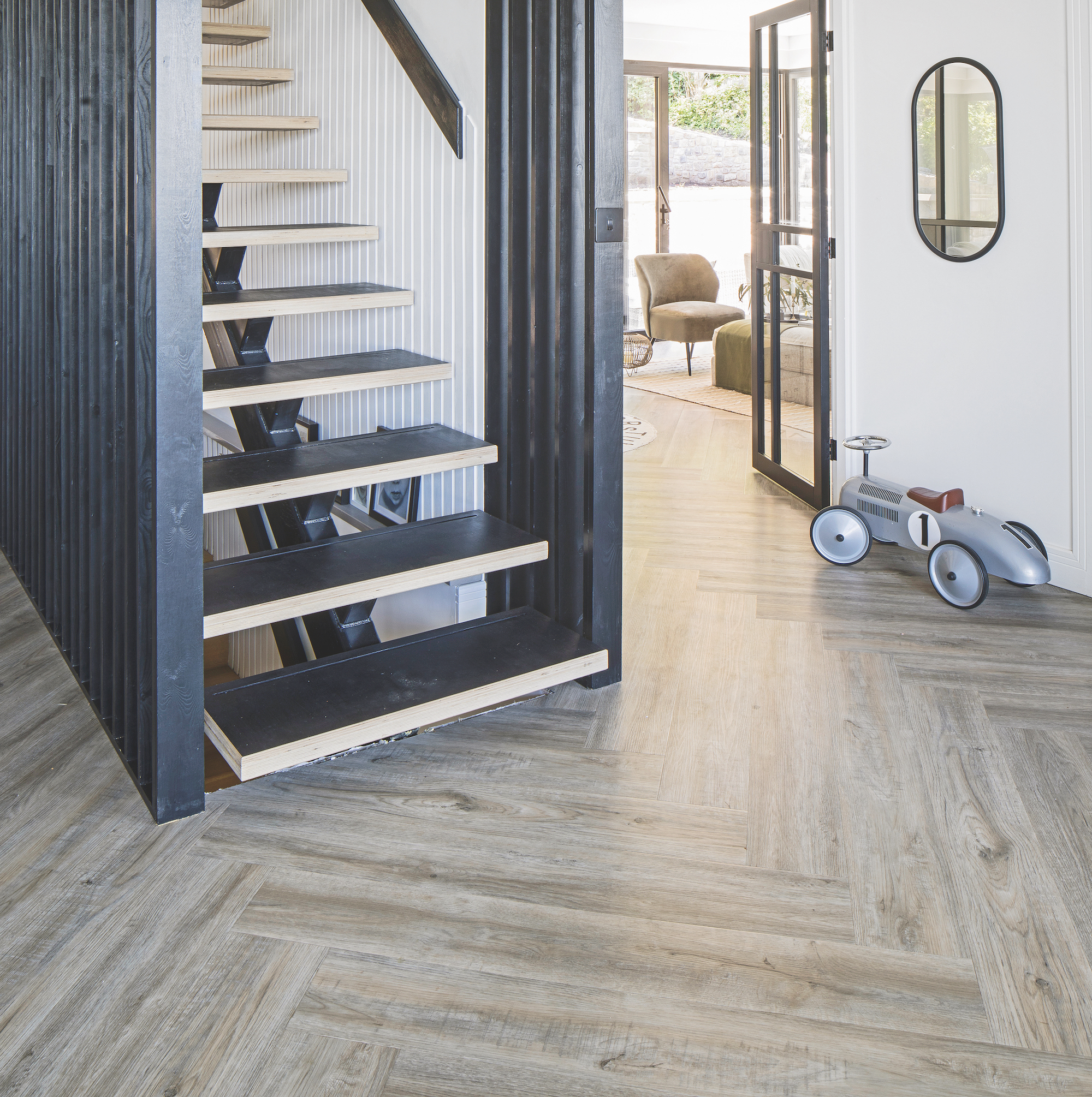
Open treads might continue to be a popular staircase trend, particularly in small hallways where light is an issue, but they can throw up safety concerns. ‘There is slightly additional risk when the back of the stairs is open – it can cause additional trip hazards,’ says Ashley Martin.
Staircase specialist A&T Carpentry agrees, stating on its website, 'The UK building regulations state that no part of a staircase or balustrade can have gaps of more than 100 mm. This is due to what is known as the “babies head rule”. It tells us that a sphere of 100 mm diameter should not go through any gap for safety reasons. This includes the spacing of the balustrade uprights as well as the gaps between treads.'
It's for this reason that we'd again always recommend using a specialist staircase supplier with a good working knowledge of British Standards and regulations if you're replacing your staircase.
10. Take extra precautions if you are older
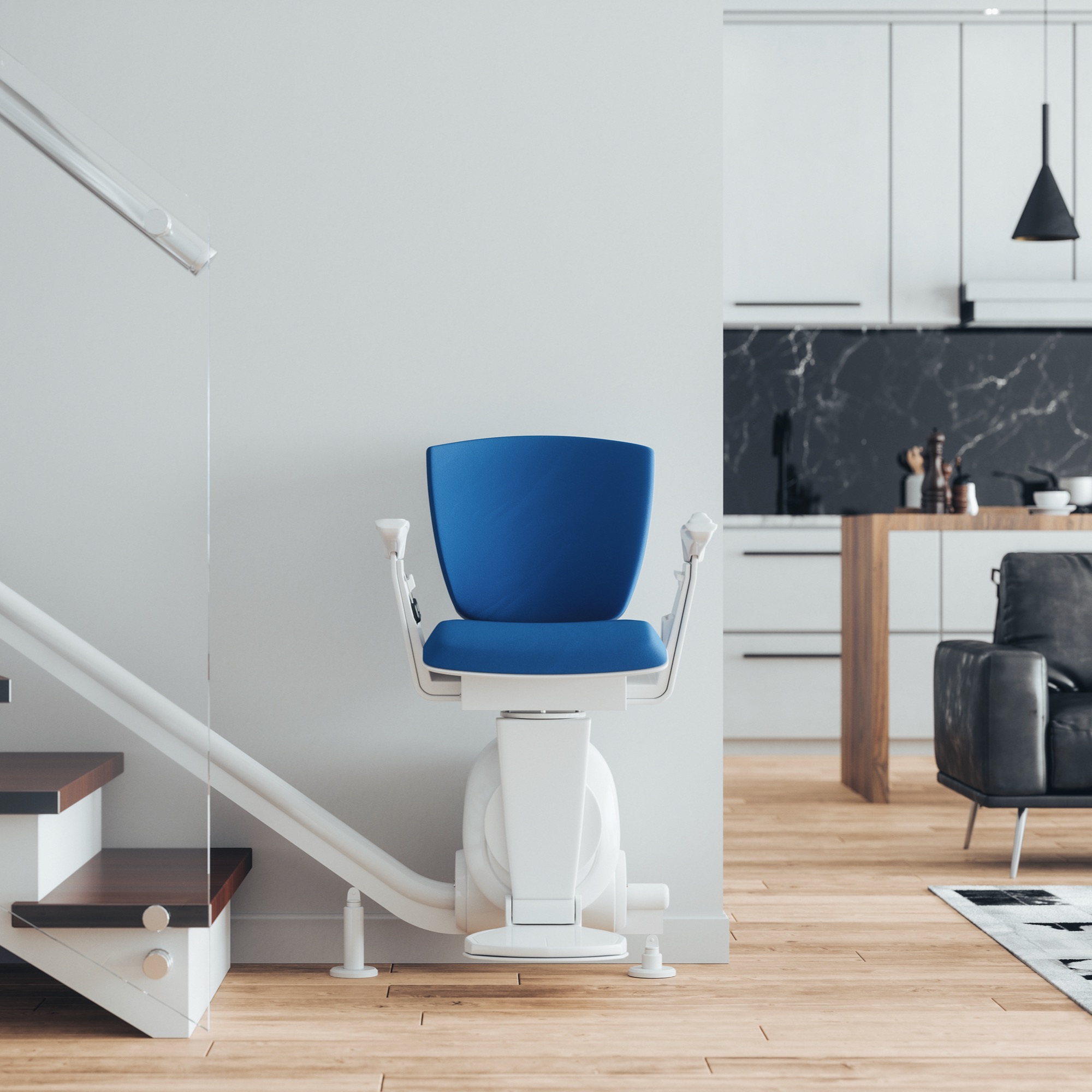
People of all ages fall on stairs. But of those 700 deaths reported by RoSPA, around two thirds of them will occur in people over 65, and the ability to recover from a fall diminishes as you get older.
'It might be worth considering a stairlift,' says Ashley. 'This won’t be appropriate for all staircases, and if you are introducing a stair lift, it could be a hazard for the people that aren’t using it. You’d potentially be losing a handrail on one side of the stairs, for example.’
If you are considering a stair lift, contact your local authority to see if you are eligible for a Government Disabled Facilities Grant to pay for it. Also, check the stair lift you are buying adheres to all British Standards, which will govern the speed at with the lift travels, the weight it can bare, etc.
Get the Ideal Home Newsletter
Sign up to our newsletter for style and decor inspiration, house makeovers, project advice and more.

Amy Cutmore is an experienced interiors editor and writer, who has worked on titles including Ideal Home, Homes & Gardens, LivingEtc, Real Homes, GardeningEtc, Top Ten Reviews and Country Life. And she's a winner of the PPA's Digital Content Leader of the Year. A homes journalist for two decades, she has a strong background in technology and appliances, and has a small portfolio of rental properties, so can offer advice to renters and rentees, alike.
-
 I tried out this neat little dehumidifier for a month – it dried my laundry in half the time
I tried out this neat little dehumidifier for a month – it dried my laundry in half the timeThe 20L SmartAir Dry Zone dehumidifier tackled my laundry drying woes head on
By Jenny McFarlane
-
 I’m seeing pastel garden furniture at all my favourite brands this spring, but QVC’s sorbet collection impressed me the most
I’m seeing pastel garden furniture at all my favourite brands this spring, but QVC’s sorbet collection impressed me the mostFresh pastel shades are a great way to liven up your outdoor space
By Kezia Reynolds
-
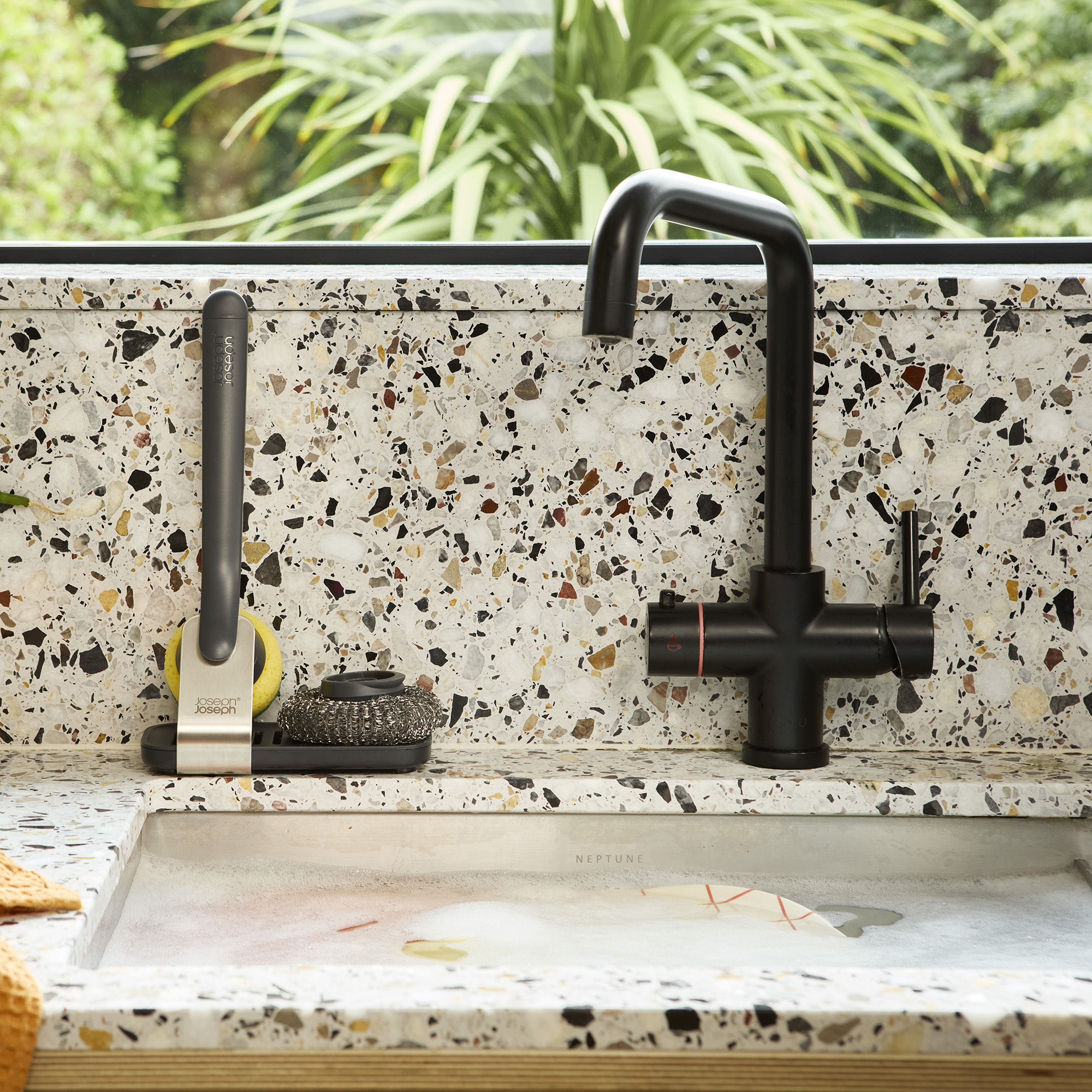 Don't tell my flatmates, but Joseph Joseph's clever new sink range finally made me enjoy washing up
Don't tell my flatmates, but Joseph Joseph's clever new sink range finally made me enjoy washing upI didn't know stylish washing up accessories existed until I saw this collection
By Holly Cockburn